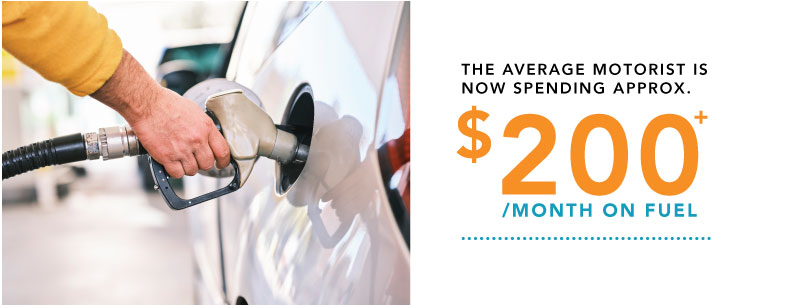RE: Stainless Steel
As you may know we have seen some recent international events that are playing a significant impact on our global supply chain.
With metal markets already having historic volatilities, the escalation of events has fueled these challenges to new heights.
Since our last report in September of 2021, we continue to see unprecedented chain of events that are causing major disruptions.
This report was prepared to create awareness and highlight the impacts particularly on Nickel and its impact on Stainless Steel goods.
More than 70% of the global supply of nickel goes into making stainless steel and superalloys, which is also the same metal used in batteries for electric vehicles. Because nickel increases an alloy’s resistance to corrosion and its ability to withstand extreme temperatures, equipment and parts made of nickel-bearing alloys are often used in harsh environments, such as those in chemical plants, petroleum refineries, jet engines, power generation facilities, and offshore installations. The same alloy is also heavily used in making stainless steel products used in our industry such as insulation cladding.
WHAT’S HAPPENING?
1. Russia/Ukraine War
Nickel surged as much as 250% in two days early March. The largest move ever on the LME — came as investors and industrial users who had sold the metal scrambled to buy the contracts back after prices initially rallied on concerns about supplies from Russia. With Russia among the top five global producers of steel, nickel and aluminum, reduced metal shipments threaten to further tighten a market that’s already short on supply. While metals haven’t been directly targeted by sanctions, prices are surging on concern that the latest measures could snarl payments to suppliers and spur banks to rein in financing for purchases of Russian goods.

2. Rising Oil & Gas Prices
Oil prices have risen over 49% since January 1st of 2022. Prices have soared above $100 per barrel (WTI) for the first time since 2014 as Russia began a full-scale invasion of Ukraine, triggering fears of a disruption to energy exports amid already tight supplies. It’s not Russia’s invasion of Ukraine that sent oil prices into a tizzy, per se, but the avalanche of sanctions that the world community threw at the country in response. Under normal circumstances, Russia is one of the world’s largest oil producers. By removing much of that Russian oil from the world market overnight, refineries and other oil buyers are now forced to scramble for whatever’s left—which means higher prices, and transportation costs. The average motorist is now spending approximately $200 more a month on fuel.

3. Rising Bunker Prices:
Bunkering is the supplying of fuel for use by ships (such fuel is referred to as bunker), including the logistics of loading and distributing the fuel among available shipboard tanks. Bunkering operations take place at seaports and include the storage and provision of the bunker (ship fuels) to vessels. Bunker prices have reached historic levels surpassing the previous peak seen in January 2020 by 31% (following the implementation of IMO2020). LMQ Petroleum recorded a $259 USD increase in just the last 2 weeks, reflecting a 34% surge in the spot price.
4. Inflation
Inflation reached 7.9% in February; consumer prices are the highest they have been in 40 years (WSJ). With the volatile oil and commodity market disruptions seen in recent weeks, cost pressures are expected to increase. Higher energy prices (Fuel, electricity, utility) and necessities such as food are pushing up the inflation reading, with the consumer price index nearing the previous high of 8.4% seen in 1982 when the nation was in recession. The CPI has increased 7.5% year over year, with energy and food increasing 27% and 7% respectively over the last 12 months.

The factors mentioned are only a handful of challenges the market is currently facing. Congested ports and the CP rail strike have no doubt added to the mix of issues.
As we continue to monitor affairs closely, we remind our clients, customers, and industry partners, that these unplanned matters tremendously impact our industry.
With such rapid unfolding of events, many suppliers are being forced to implement extraordinary responses to mitigate negative business impacts. Please be aware that while Ideal Products will do it’s best to minimize these impacts to our customers, some items may be necessary to pass along. Some examples may include fuel surcharges, spot pricing, or reduced quote validity times.
WHAT CAN OUR CUSTOMERS DO?
As mentioned in our previous report:
TAKE ACTION NOW
Plan ahead, and give yourself some extra time to look at your forecasting and plan as early as much as possible. Consider making purchase commitments today instead of tomorrow.
ALTERNANTES OR SUBSTITUTIONS
Consider using alternative products or substitutions. Many of our products have similar or better performance than the standard and may have better availability. Opening yourself to a broader range of products can be cheaper in the long run.
COMMUNICATION AND COLLABORATION
As soon as new information or changes arise on project schedules, plans, forecasting, etc., let us know as soon as possible. The more we know, the more we can help find solutions together.
OPTIMIZE SHIPMENTS
Save money by saving on freight and logistics. Optimize your shipments with bulk order sizes to reduce congestion.
While continuing to face these challenges, we truly appreciate the commitment and collaboration of overcoming these various hurdles together. We thank all our direct and indirect customers for allowing us a place to serve you and your team.
Please do not hesitate to contact your local Ideal Products representative for more information, questions, or concerns.
Download a print-ready PDF of this report below:
 1.800.299.0819
1.800.299.0819 1.888.877.7685
1.888.877.7685